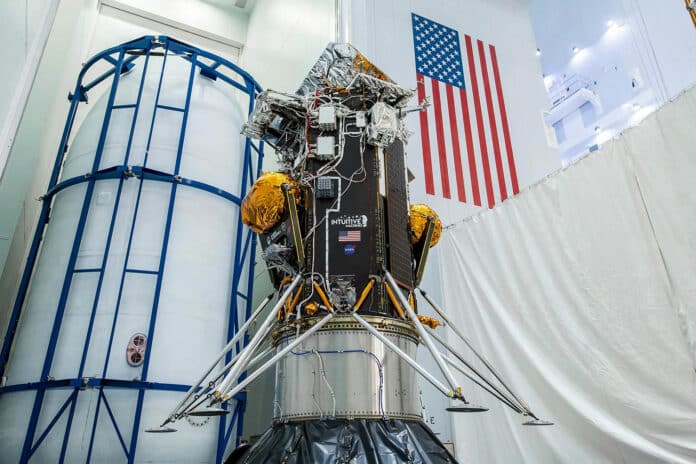Spacecraft fuel is a precious resource in space and must be managed carefully. Unlike on Earth, where gravity pulls the liquid to the bottom of a tank, fuel in space can float around because of the very small amount of gravity. It doesn’t settle to the bottom of propellant tanks but rather clings to the walls and could be anywhere inside. This makes it challenging to determine how much fuel is remaining and how long the mission can last.
Accurately measuring and managing fuel is crucial for planning and executing space missions.
To solve this problem, NASA Glenn has developed a space-age fuel gauge technology called the Radio Frequency Mass Gauge (RFMG) payload that estimates how much propellant is available in a tank. It does not make an exact measurement.
It is set to be demonstrated on an upcoming journey to the Moon as a part of the Intuitive Machines IM-1 delivery through the Commercial Lunar Payload Services (CLPS) initiative. This program enables American companies to deliver scientific, exploration, and technology payloads to the Moon’s surface and orbit.
The RFMG technology uses radio waves and antennae in a tank to measure how much propellant is available. It sends radio signals through the tank and analyzes how the fuel reflects them. This way, it can determine the volume and mass of the propellant.
RFMG could be crucial during future long-duration missions that will rely on spacecraft fueled by cryogenic propellants, like liquid hydrogen, liquid oxygen, or liquid methane. Although these fuels are incredibly efficient, they can be challenging to store since they tend to evaporate quickly, even at low temperatures.
RFMG has been tested on a small scale on the International Space Station and during parabolic flights, but this will be the first long-duration RFMG testing on a standalone spacecraft, which is the Nova-C lunar lander.
The data engineers receive throughout their journey could validate simulations done on the ground, and this could mark the next step in developing this technology.
“It’s definitely a critical point,” said Lauren Ameen, deputy manager for the Cryogenic Fluid Management Portfolio Project Office at NASA’s Glenn Research Center in Cleveland. “This is the first time we’re getting this type of data for RFMG.”
Accurately measuring fuel levels on spacecraft will be critical for optimizing resources as NASA works towards its goal of sending humans to the Moon through the Artemis program.
